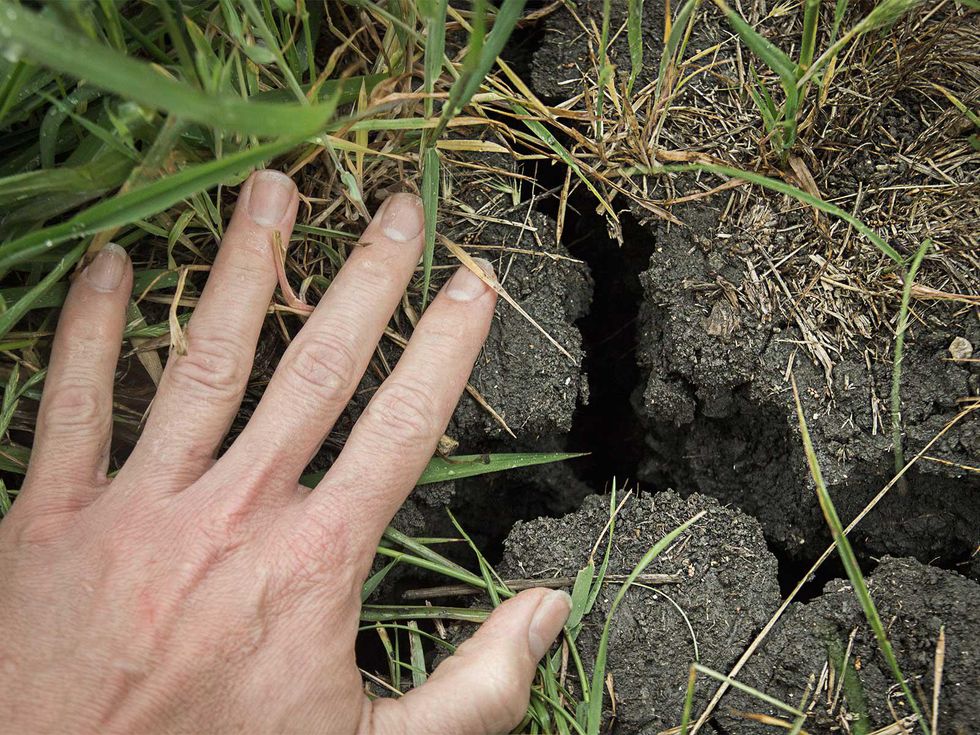The Farmer Diaries
North Texas farmer combats drought with wicking garden beds
Winter crashed my garden party last week and started talkin' smack. Tomato plants withered. Borage leaves got bruised. Sweet potato transplants were pummeled into clumps of reddish brown leaves. These all resulted from a cold spell when the weather should have been moist and warm.
It was the latest twist in what has been a weird spring. March started off so warm that I felt safe planting; I ended up regretting that. April warmed up, then hit us with two nights of freezing temperatures in the 20s.
As May approached, I thought we were in the clear. But we got another cold snap on May 2. Okra and squash, who both love the heat, have been reluctant to sprout; so far, they're a no-show.
A wicking bed has a built-in reservoir of water under the soil. The plants have a contained source of water that won't evaporate or dissipate into the ground nearby.
Now drought has shown up to the party, driving wide cracks into the parched fields of onions and beans. The rain we got this week was a relief, but too little too late. Garden crops need a head start of growth before summer arrives and blows a bunch of hot air around.
I've mentioned my amazing rainwater harvesting system, but my water supply is already down by a quarter, a month before I should be thinking about opening the spigots. At this rate, and with gloomy predictions of rainfall, the water I collected over the winter will be used up by July.
New ways to fight drought
If climate change is the culprit, then anyone who wants to opt out of industrialized agriculture and declare food independence must respond with a multi-pronged approach. I've been investigating ideas this week on how to sustain a portion of my crops. I don't want a replay of the summer of 2011, when the worst drought on record left me and many others with a garden full of dead plants.
One option is vertical farming, which uses high-tech methods to grow crops in high-rise buildings with controlled environments using a fraction of the resources of land, water and fertilizer required by field agriculture. The idea looks promising as a social shift toward sustainability. But the million-dollar price tag is out of reach. However, the concepts that make vertical farming work are within reach.
One of vertical farming's major concepts is hydroponics, the art of growing plants in water without using soil. Advocates say the method uses 90 percent less water to produce the same amount of food. Anyone with two five-gallon buckets and an aquarium pump is halfway to his first crop of hydroponically grown carrots. You can buy supplies at local hydroponics stores such as Texas Hydroponics, Lone Star and Coolhouse.
But then an acquaintance told me about the Food Is Free Project, an Austin-based nonprofit co-founded by John VanDeusen Edwards that is dedicated to helping people collaborate in growing healthy food and building their community.
"So much of the status quo in society seems to be centered on survival, a sort of 'this is mine' mentality," Edwards says. "When we focus on building up the people around us, we also make things better for ourselves. We turn from survival to thrival."
The organization's key project is the wicking garden bed, a raised bed with a built-in reservoir of water under the soil. The plants have a contained source of water that won't evaporate or dissipate into the ground nearby. You add water through a vertical pipe poking up from the ground that is connected to the reservoir; an overflow drain four inches from the bottom prevents overfilling.
Edwards adapted the idea from methods used to grow crops in arid regions. He claims that the bed needs only a few gallons of water every two to four weeks. That beats my average of two gallons per day for each comparably sized raised bed.
Using recycled pallets and reclaimed materials, each bed can cost as little as $18. My bed cost $26 – close. It was an easier project than the hydroponic carrot bucket because I had most of the materials, including pallets, nails and compost.
For my first wicking bed, I planted Texas Wild tomatoes, carrot seeds, cilantro and a chamomile transplant, just to see how it works for a variety of plants. My first try isn't too pretty, but I'll improve the style later; this first bed was for substance.
I can't see wicking beds replacing acres of onions, beans, wheat and corn. But if the concept proves effective, it represents another alternative to my field crops and raised beds. If my garden party ends early because summer gets too mean, I may still reap a stash of veggies that'll keep me from having to grab a bite at the shindig hosted by industrialized agriculture.
Marshall Hinsley's first try at a wicking bed with a built-in water reservoir. Construction details are available at Food Is Free Project's website [http: /foodisfreeproject.org/resources/].



